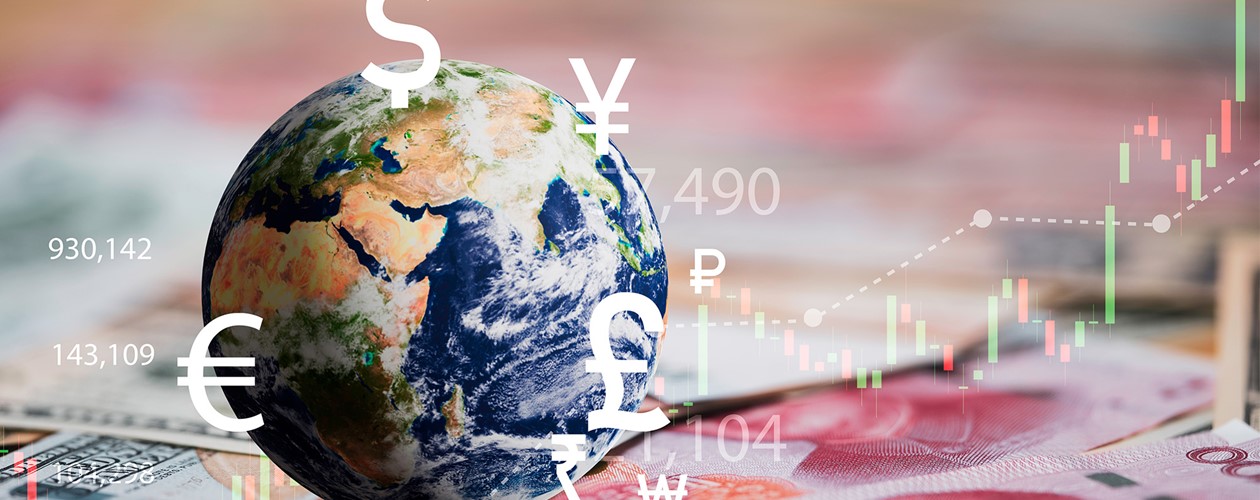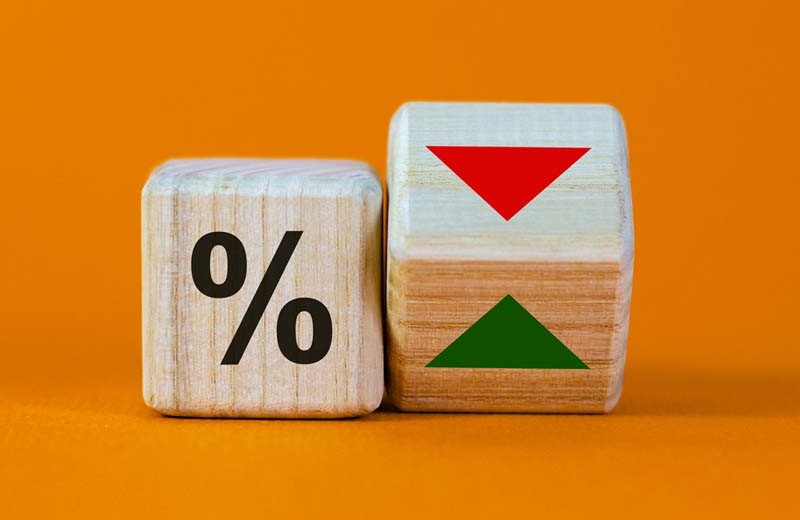
Key market movements - December 2022
After such a challenging first three quarters of 2022, it was difficult to imagine the final quarter would deliver anything substantially different. As they say however, it is always darkest before the dawn. With no new risks surprising or alarming markets, and the impact of significant, and ongoing, tightening of monetary policy starting to be reflected in reducing rates of inflation, market participants started to consider when recent rate hikes could begin to be pared back. With tentative optimism that this rate rising cycle might end sooner than expected, November in particular saw strong performances in both shares and bonds, helping propel the final quarter of the year into the positives.
Unemployment remains low, GDP growth beat estimates, inflation has slowed (a little), and the corporate earnings reporting season was strong in many sectors, all of which contributed to positive returns.
Many central banks, in particular the US Federal Reserve (the Fed), reduced the speed at which they have been increasing interest rates. Although the Fed’s final announcement of the year warned of difficulties still to come for the economy and that the interest rates were far from their peak level in this cycle. That halted the emerging ‘Santa rally’ in early December and the last month of the year was generally weaker. Regardless, the quarter overall was generally positive across the board which helped claw back some of the market weakness from earlier in the year.
International shares
|
|
+7.1% (hedged to NZD) |
|
|
-3.4% (unhedged) |
US, Eurozone and UK share markets all made strong gains in the quarter, with much of the progress made in
November. Investors were generally balancing ongoing central bank caution with signs that elevated global inflation could begin to ease, and indications that the current pace of policy tightening would slow.
Gains in the UK were also helped, in part, by the country emerging from its September crisis when the former prime minister and chancellor announced huge fiscal stimulus, with little detail on how it would be funded.
In a reversal of recent price action, the New Zealand dollar was very strong through the quarter. While this was good news for anyone buying foreign currency over the holidays, it was not so good for investors holding unhedged foreign assets, as these holdings, when reported in New Zealand dollar terms, are worth less. Conversely, any NZD hedged securities were insulated from this and given the volatility in currency markets in 2022, it underlines the perils of being fully hedged, or fully unhedged, in these highly unpredictable times.
The MSCI World ex-Australia Index delivered a return of +7.1% for the quarter hedged to the NZ dollar, and -3.4% for the unhedged index. This meant the 2022 calendar year return for the New Zealand dollar hedged index ended down -17.9%, while the unhedged index returned -12.0%.
Source: MSCI World ex-Australia Index (net div.)
Emerging markets shares
|
|
-3.2% |
The relaxation of Covid restrictions in China and the weakening in the US dollar were the main themes in emerging markets through the quarter, driving up returns in local currencies. The headline MSCI Emerging Markets Index gained +9.8% for the quarter in US dollar terms.
Investors welcomed the relaxation of China’s Covid regulations, which helped boost optimism regarding an earlier-than-expected re-opening of the economy. This propelled the Chinese share market to a double-digit return and via its significant weight was the main driver of the strong index returns.
Poland and Hungary also rebounded strongly following months of underperformance resulting from the war in
neighbouring Ukraine.
Weaker energy prices over the quarter led to Middle Eastern markets generally underperforming, with soccer world cup hosts Qatar, stumbling to a double-digit decline for the quarter.
Although these results were very good in local currency, the strong New Zealand dollar meant the MSCI Emerging Markets Index produced a quarterly return of -3.2% in unhedged New Zealand dollar terms and finished the year down -13.4%.
Source: MSCI Emerging Markets Index (gross div.)
New Zealand shares
|
|
+3.8% |
The New Zealand market, as measured by the S&P/NZX 50 Index, shook off a negative October to post a welcome gain of +3.8% for the quarter. Unfortunately, the index still recorded a -11.3% return for the year, remarkably, the first negative calendar year for the NZ share market since 2008.
Three of the top 15 companies by market capitalisation, made strong contributions to the overall index performance – Fisher & Paykel Healthcare (+23.1%), a2 Milk (+20.6%) and Ebos Group (+16.7%). For a2 Milk and Fisher & Paykel in particular, both of having had their share prices under some pressure at different times throughout the Covid disruptions, it was a very pleasing result.
At the other end of the spectrum, a trio of healthcare companies, Ryman (-36.5%), Arvida (-19.1%) and Summerset Group (-17.9%) all struggled, continuing a downward trend in the performance of each of these shares over the last 18 months.
Source: S&P/NZX 50 Index (gross with imputation credits)
Australian shares
|
|
+2.6% |
The Australian share market (ASX 200 Total Return Index) closed out a relatively robust year delivering +9.4% in local currency terms through the quarter.
This strong quarterly result is less surprising when the two largest components of the index – BHP Group and Rio Tinto – delivered returns (in Australian dollars) of +18.5% and +24.7% respectively. Both of these mining firms have benefitted considerably from a more than 50% rally in iron ore prices since the beginning of November.
Other large index constituents include the 'Big Four' banks (CBA, NAB, Westpac and ANZ) which all delivered quarterly returns ranging from +7.0% to +16.2% as their revenue expectations continue to benefit from a higher interest rate environment.
Although the Australian share market was strong overall, the reported returns to unhedged New Zealand investors were much lower due to the relative strength of the New Zealand dollar over the quarter. For the full 2022 calendar year, the ASX 200 was slightly negative (-1.1% in AUD and -0.1% in NZD terms). However, relative to most other assets classes, the ASX was a very resilient performer during a highly challenging period for investment markets.
Source: S&P/ASX 200 Index (total return)
International fixed interest
|
|
+0.5% |
Bond markets ended the year on a mixed note in the final quarter. Government bond yields edged higher towards the end of the year, reflecting some disappointment at the still hawkish tone from some central banks, despite mounting evidence of slowing economic growth.
The US Federal Reserve raised interest rates twice during the quarter, with the Fed Funds rate ending the year at 4.5%. The Bank of England also announced two rate hikes, bringing the UK interest rate to 3.5%, while the Bank of Japan announced a modification to its yield curve control policy.
Credit spreads (the extra return investors need to encourage them to invest in bonds with lower credit quality) generally tightened across the quarter on improved risk sentiment. This resulted in US and European investment grade bonds generally outperforming government bonds.
The eurozone faced its most challenging year for inflation in its history, although indicators late in the year signalled slowing headline inflation, helped by falling energy price pressures. Nevertheless, the European Central Bank (ECB) continued to tighten monetary policy conditions and maintained its aggressive stance about future rate hikes.
Over the quarter, the US 10 year bond yield rose from 3.83% to 3.88%, with the two year bond yield rising from 4.27% to 4.43%. Germany’s 10 year bond yield increased from 2.11% to 2.56%. The UK 10 year yield decreased from 4.10% to 3.67%, after the country’s new prime minister reversed most of his predecessor’s ‘mini budget’ proposals, which had been very poorly received by the markets.
The FTSE World Government Bond Index 1-5 Years (hedged to NZD) returned +0.5% for the quarter and -4.6% for the year. The broader Bloomberg Global Aggregate Bond Index (hedged to NZD) advanced +0.8% in the quarter but declined -11.7% for the year, comfortably the worst calendar year for this asset class.
Source: FTSE World Government Bond Index 1-5 Years (hedged to NZD)
New Zealand fixed interest
|
|
+0.2% |
The Reserve Bank of New Zealand (RBNZ) raised the Official Cash Rate (OCR) twice more in the fourth quarter taking this benchmark rate to 4.25%.
In their 23 November statement, the RBNZ noted that to meet its policy remit of low annual inflation while supporting maximum sustainable employment, both 'actual and expected' inflation needed to decline substantially. Accordingly, given the extent to which domestic spending was contributing to higher and more persistent actual and expected inflation outcomes, the RBNZ determined that a November rate hike of 0.75% to 4.25% was warranted and revised their projections for a higher OCR peak (now targeting 5.50%) in 2023.
Similar to the broad trends overseas, the New Zealand 10 year bond yield opened the quarter at 4.29%, briefly touched 4.00% in early December, and finished the quarter at 4.55%.
The S&P/NZX A-Grade Corporate Bond Index rose +0.2% for the quarter, while the longer duration but higher quality S&P/NZX NZ Government Bond Index gained +0.1%. Both indices ended the year well down at -5.1% and -9.1% respectively.
Source: S&P/NZX A-Grade Corporate Bond Index
Table 1: Asset class returns to 31 December 2022
| Asset class | Index name | 3 months | 1 year | 3 years | 5 years | 10 years |
|
New Zealand shares |
S&P/NZX 50 Index |
+3.8% |
-11.3% |
+0.6% |
+7.3% |
+12.1% |
|
Australian shares |
S&P/ASX 200 Index (total return) |
+2.6% |
-0.1% |
+6.6% |
+6.5% |
+6.9% |
|
International shares |
MSCI World ex Australia Index |
+7.1% |
-17.9% |
+4.3% |
+6.0% |
+10.7% |
|
MSCI World ex Australia Index (net div.) |
-3.4% |
-12.0% |
+7.0% |
+8.5% |
+11.9% |
|
|
Emerging markets shares |
MSCI Emerging Markets Index (gross div.) |
-3.2% |
-13.4% |
-0.4% |
+1.2% |
+4.5% |
|
New Zealand fixed interest |
S&P/NZX A-Grade Corporate Bond Index |
+0.2% |
-5.1% |
-1.5% |
+1.0% |
+3.0% |
|
International fixed interest |
FTSE World Government Bond Index 1-5 Years (hedged to NZD) |
+0.5% |
-4.6% |
-0.7% |
+0.6% |
+2.1% |
|
Bloomberg Global Aggregate Bond Index (hedged to NZD) |
+0.8% |
-11.7% |
-2.8% |
+0.1% |
+2.8% |
|
|
New Zealand cash |
New Zealand One-Month Bank Bill Yields Index |
+1.0% |
+2.6% |
+1.1% |
+1.4% |
+2.0% |
Unless otherwise specified, all returns are expressed in NZD. We assume Australian shares and emerging markets shares are invested on an unhedged basis, and therefore returns from these asset classes are susceptible to movement in the value of the NZD. Index returns are before all costs and tax. Returns are annualised for time periods greater than one year.
For a detailed review of the market commentary for the quarter, see ‘Market commentary - December 2022' or click here to view the full newsletter in PDF.
Disclaimer
Information contained in this newsletter does not constitute personalised financial advice and does not take into account your individual circumstances or objectives. You should carefully consider whether the Synergy investment portfolios are appropriate for you, read the applicable offer documentation, and seek appropriate professional advice before making any investment decision. The information in this newsletter is of a general nature only. Investors should be aware that the future performance of the Synergy investment portfolios may differ from historical performance. Details are correct as at the date of preparation and are subject to change. The investment objectives and strategies of the Synergy investment portfolios may change in the future.
While every care has been taken in its preparation, Consilium makes no representation or warranty as to the accuracy or completeness of the information in this newsletter and does not accept any liability for reliance on it. The capital value, performance, principal and returns of the Synergy investment portfolios are not guaranteed or secured in any way by Consilium, or any other person. Investments in the Synergy investment portfolios do not represent deposits or other liabilities of Consilium and are subject to investment risk, including possible loss of income and principal invested.
-

Quarterly market commentary - December 2022
If you needed any reminder that investment markets are forward looking, then the last quarter of 2022 provided the perfect example. Entering the final three months of the year, investors were surveying an environment that included a seemingly unending supply of negative news headlines... So, what did share markets do? They went up. In many cases, they went up strongly.
-

12 ways to finally achieve your most elusive goals
It’s that time of year to muse on what you hope to accomplish over the next 12 months. The best advice when making resolutions is to set goals that are “SMART” – specific, measurable, achievable, relevant (to you) and time-bound. Once you’ve set your goals, what can help you achieve them? Based on our research, we’ve distilled 12 goal-enablers. These cover four broad principles you can use to keep yourself on track.
-

Key market movements - September 2022
Volatility remained high through the third quarter of 2022 as markets priced in changing expectations on the economic impact of rapidly rising interest rates, European energy uncertainty increased, and the effects of COVID-19 continued to linger. The quarter was a story of two halves - July and August delivered some initial relief and strong returns for battered investors in both share and bond markets, and then September reversed course, wiping out the majority of the earlier gains.


